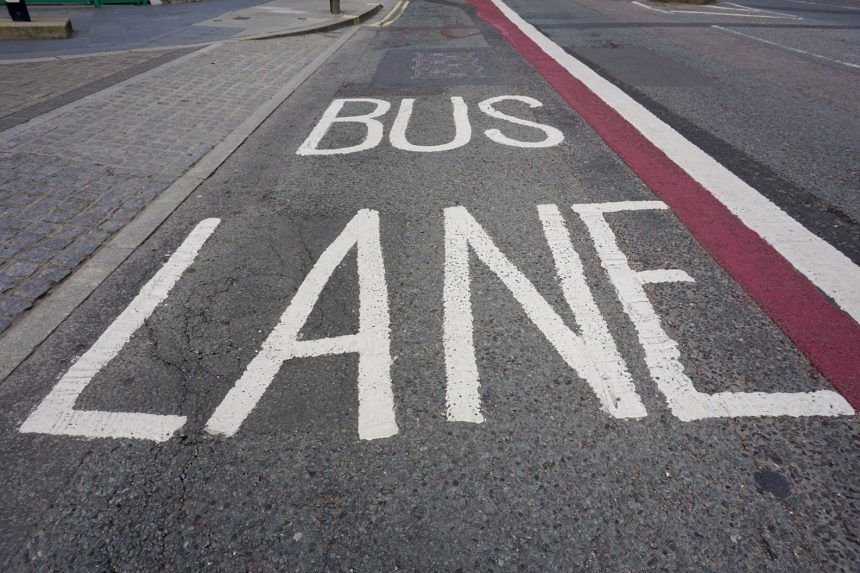The RAC has called for an update to government guidance on bus lanes after the motoring organisation claimed its latest research indicated the measures caused confusion among drivers.
According to the new study, 36% of drivers say they have accidentally driven into a bus lane.
Of this number, 42% ended up paying a fine, the poll of 1,763 drivers taken in November 2024 shows.
With a 10% decrease in bus speeds increasing bus operating costs by £400 million, bus priority measures are seen by the sector to be crucially important.
However, if the RAC’s claims are correct, public acceptance of the infrastructure is being harmed by confusing signage.
The RAC argues that few drivers deliberately choose to driver in bus lanes, with the research indicating only 4% admit to this.
The poll data also suggests 56% believe signage is inadequate, 33% say signs are not easy to spot while driving and not easy to understand, while 23% say the signs are visible enough but not easy to understand. On the contrary, 40% believe the signage is easy to spot and understand.
In terms of more precise reasons for the confusion, 85% complain there is too much information to take in about the hours of operation, 29% insist there aren’t enough signs and 26% believe the signage is too small.
Further, where there is confusion, 32% say they err on the side of caution by not driving in bus lanes.
Asked whether councils should issue a warning letter the first time a driver is caught, 85% answered yes.
The RAC’s head of policy, Simon Williams, says: “We have always maintained that the majority of drivers don’t deliberately set out to drive in bus lanes, so it’s good to see this research confirming that. Our suspicions around the visibility and clarity of bus lane signage have also been borne out, with drivers expressing considerable concerns about signs often being hard to spot and difficult to understand.
“Bus lanes are more common in urban environments where the driver’s job in spotting and comprehending bus lane signage is arguably even harder. There is so much else to take in, from vehicles and other road users to traffic lights and warning signs.
“For these reasons, we continue to call on councils to write to drivers who stray into bus lanes the first time, rather than simply issuing them with fines. While it’s fair that anyone who deliberately drives in bus lanes should expect to be fined, our research shows that far too many drivers end up doing so unwittingly, most probably because the signage really isn’t good enough. This can be despite bus lane signage almost certainly meeting government guidelines.
“We therefore feel there’s a good case for this guidance to be updated. Our findings suggest the quality and frequency of signage is a big part of why so many drivers fall foul of bus lanes.
“And it appears there is a very unfortunate knock-on effect for bus lanes that only operate at certain times of day, with drivers not using them even when they’re allowed to. This seems to be for a combination of reasons ranging from an inherent fear of being fined to just not being sure of what the signs say.
“We have a great deal of sympathy for drivers because there is a lot of information to process when you’re at the wheel of a car doing your best to drive safely. It is also worth noting that failing to use the available road space to its full capacity can have a detrimental impact on traffic flow.”



























